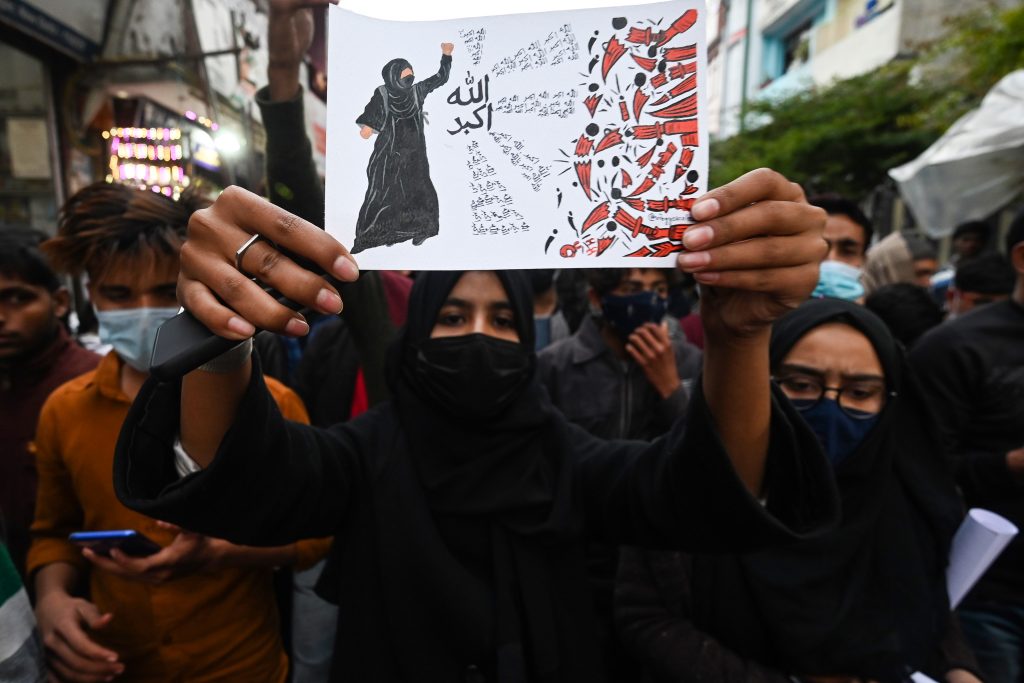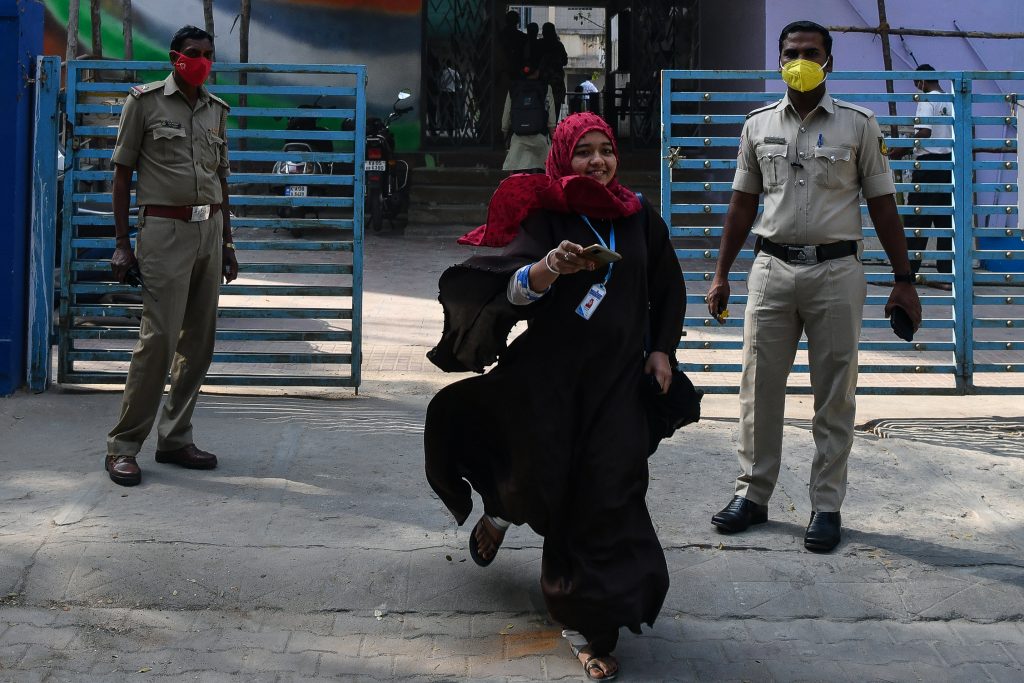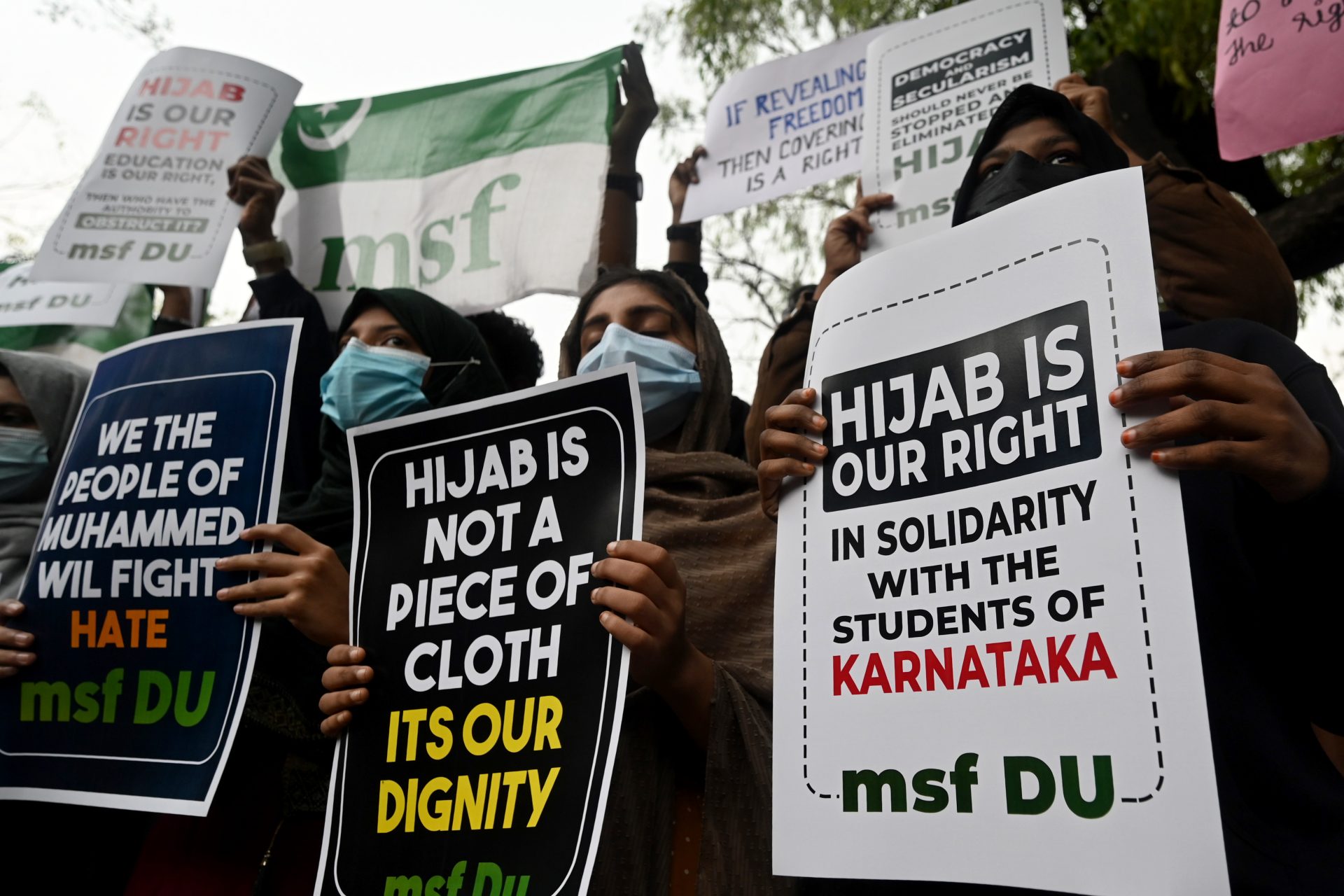Several activists and Catholic leaders in India questioned the decision of some Church-run institutions to ban the wearing of hijabs by Muslim girls in schools.
Brother Varghese Theckanath, director of the Montfort Social Institute, expressed surprise over the decision of a Catholic college in Andhra Pradesh to ban the wearing of the scarf.
Father G. Anthony Peter Kishore, principal of Andhra Loyola College in Vijayawada, confirmed that two girls were asked to remove their hijab before entering the classroom.
In Kerala state, Sister Roshna, headmistress of Little Flower UP School at Mananthavadi in the state’s Wayanad district, had apologized for barring a Muslim student from attending classes in her hijab.
The nun admitted that she reprimanded the student for violating the dress code. She then asked the student to leave the school.
The school administration only relented when the girl’s parents filed a complaint before the police.
Sister Roshna said the girl only started wearing the hijab when the controversy over the wearing of the scarf heated in recent weeks.
Father Maria Charles, secretary for education and culture of the Catholic Bishops’ Conference of India, said that “in principle” he is against the prohibition of the wearing of the hijab.
“For a piece of cloth are you trying to stop the education of girls?” said the Salesian priest, adding that it has taken years of efforts to get Muslim children to school.
The current conflict began in September 2021 when a girl’s preparatory school in the Indian state of Karnataka moved to ban hijabs, saying the Muslim headscarves violated the school’s dress code.
In the months and weeks since, students at various schools in the region have protested the ban by wearing their hijabs and demanding to be let back into school.
At the same time, mobs of Hindu nationalists, many wearing the saffron color associated with Hinduism, have protested at the schools in support of the hijab ban.

Hindus make up 84% of Karnataka’s people, while about 13% are Muslim and fewer than 2% are Christian.
The government of Karnataka, which has expressed support for the hijab ban, is deliberating whether to pass an anti-conversion law similar to that of eight other Indian states, which Christians and others say are abused by extremists.
After weeks of protests so intense that high schools and colleges had to close, the Karnataka High Court on February 10 issued an order calling for an end to the violence and for schools to reopen.
The order came in response to two petitions asking that Muslim women be allowed to wear hijabs in school.
“Whether wearing of hijab in the classroom is a part of essential religious practice of Islam in the light of constitutional guarantees, needs a deeper examination,” the court wrote.
The court then ordered that all students, regardless of religion, should not wear religious garb in school “until further orders.” The court specifically mentioned saffron shawls, scarfs, hijabs, and “religious flags.”
Though the Indian constitution guarantees freedom of religion, eight states have passed laws aimed at preventing conversions from Hinduism to minority religions by “force” or “inducement.”
These laws and related accusations have drawn criticism from India’s religious minorities and from an official U.S advisory body.

In recent years, Christians in India have decried an apparent rise in anti-Christian violence and Hindu extremism. Hindu mobs — often fueled by false accusations of forced conversions — have attacked Christians, destroyed churches, and disrupted religious worship services.
In addition to persecution against Christians, reports indicate that Indian Hindus have systematically targeted Muslims in lynch mobs for slaughtering or eating beef– a practice that Hindus consider to be a religious offense.
Humera Razzak (not her real name), a student of the college, said there were no objections to the wearing of hijab until the school mandated the strict adherence to the dress code.
“This is nothing but Islamaphobia,” said the girl.
Mehrunisa Begum of Kerala’s Kozhikode district said it was “with great difficulty” that she was able to convince her husband and and family to let her daughters go to school.
“If the hijab is banned, then they will never allow my girls to go for higher education,” said the Muslim woman.
“We are supposed to be free to wear what we want, but now we are being forced to choose between religion and education,” said Sabina Khan, a Muslim student in Kozhikode. – with a report from Catholic News Agency







